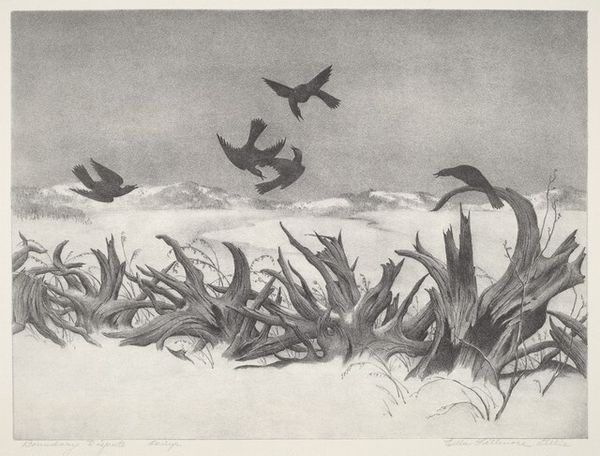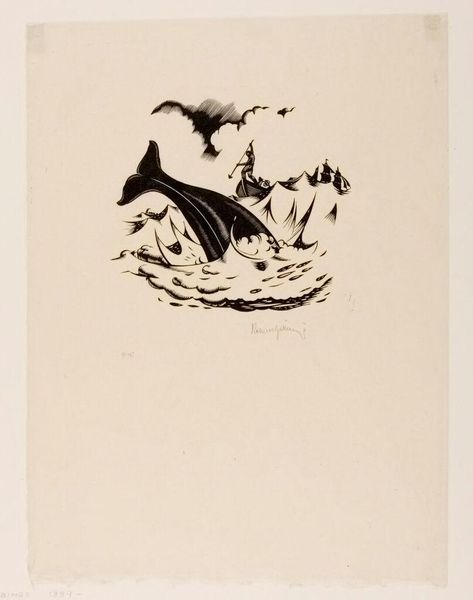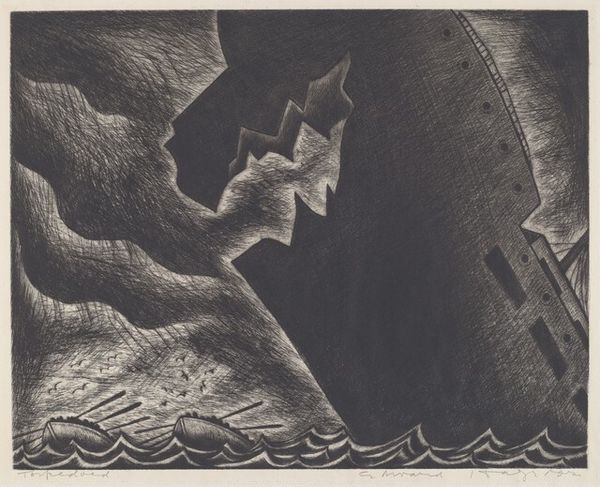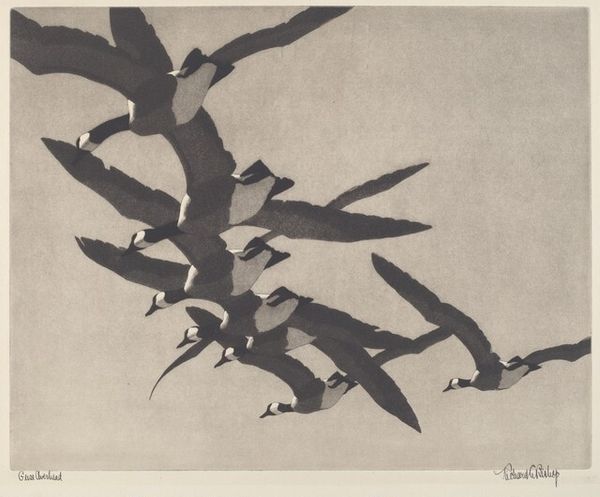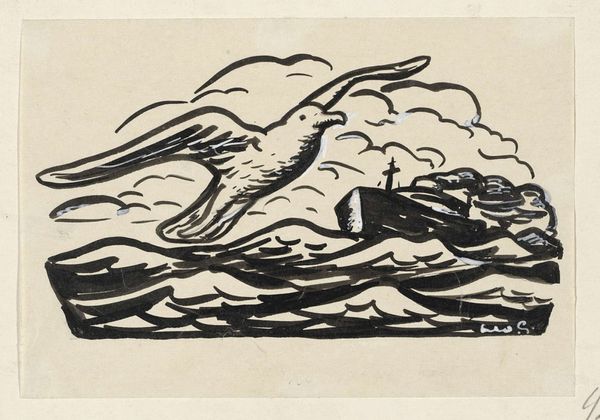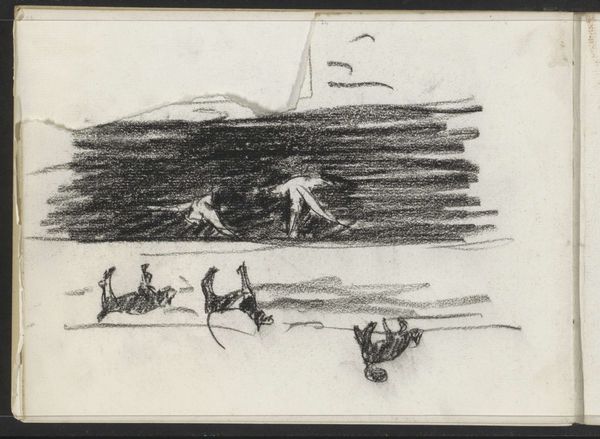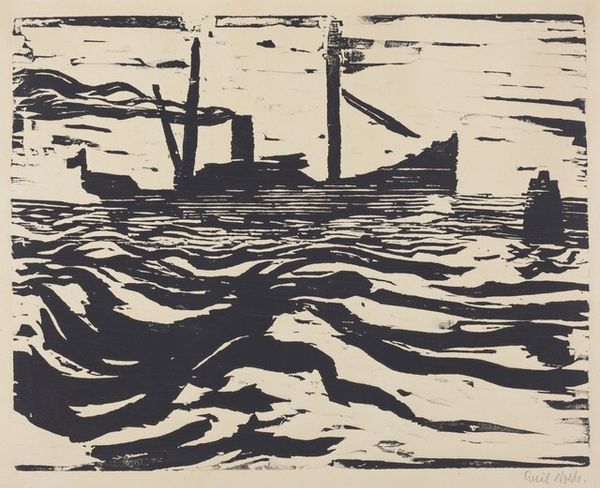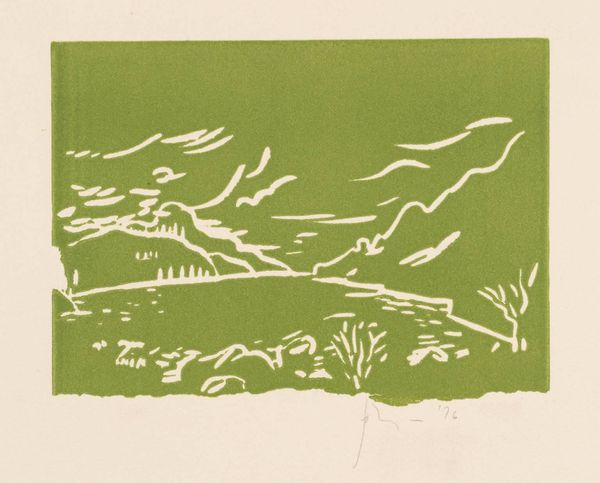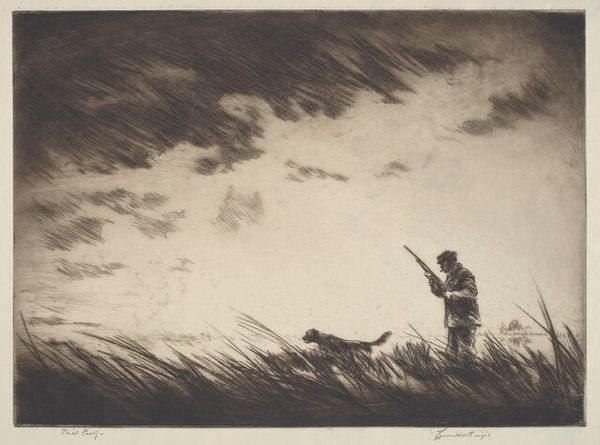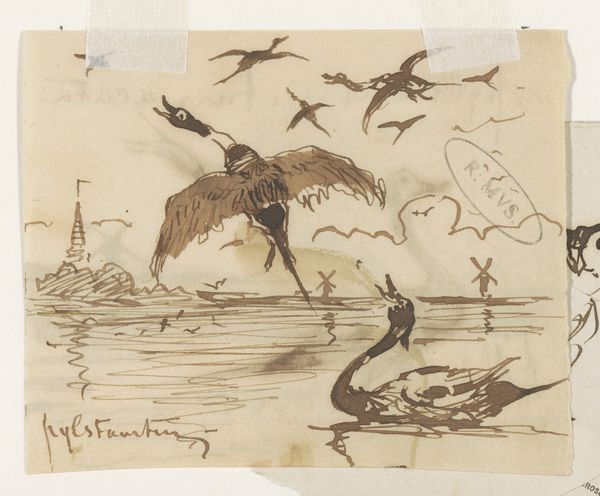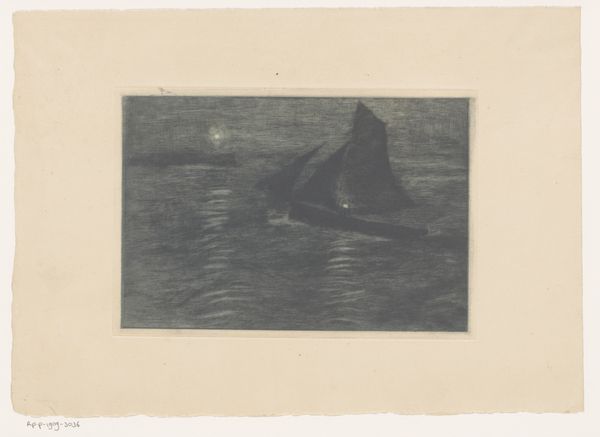
print, woodcut
# print
#
landscape
#
figuration
#
woodcut
Dimensions: Image: 227 x 267 mm Sheet: 310 x 400 mm
Copyright: National Gallery of Art: CC0 1.0
Curator: Ah, this woodcut. Tod Lindenmuth’s "On the Grand Banks", likely from the 1920s. Quite striking, isn’t it? The bold blacks against the stark white... Editor: It does punch you in the gut a little, doesn't it? Feels lonely, ominous even. Like the world’s holding its breath, waiting for something to crack. Curator: That's a wonderful reading. The almost complete absence of greyscale – which is characteristic of the woodcut technique - emphasizes the brute struggle of humanity against nature. The Grand Banks were notoriously dangerous, and the figures in the boat are tiny against those choppy, relentless waves. It almost feels like they’re swallowed by the sea. Editor: The birds circle above like fate or doom. Birds appear quite often as omens of death. Are they carrion birds? Perhaps vultures hoping for someone to drown. It adds to this feeling of inevitability. Is that just the style, though? That almost cartoonish simplification? Or is there something deeper being expressed through the symbols of isolation? Curator: I think Lindenmuth is very deliberate in that simplification. This isn't just a landscape; it’s a symbolic landscape. Every stark shape – the waves, the boat, the birds – is distilled to its most essential form, which speaks volumes about the rawness and risk that these men experienced. He is telling us to look closely! Editor: And to really consider not just the risks that these men face, but the continuity. The banks remain; people test themselves against it again and again. There is beauty in it, yes, but it is terrible. It is indifferent. Curator: I think terrible sums it up perfectly. Lindenmuth leaves us with that unresolved tension. He lets the piece linger. And it works! Editor: Indeed. After reflecting on it for a bit, that's exactly its lasting impact. Not pretty; resonant. Thank you, Lindenmuth, and the men.
Comments
No comments
Be the first to comment and join the conversation on the ultimate creative platform.
